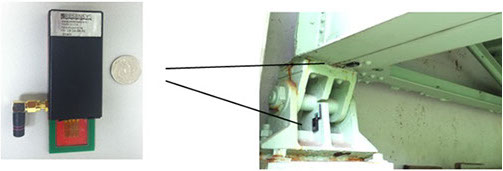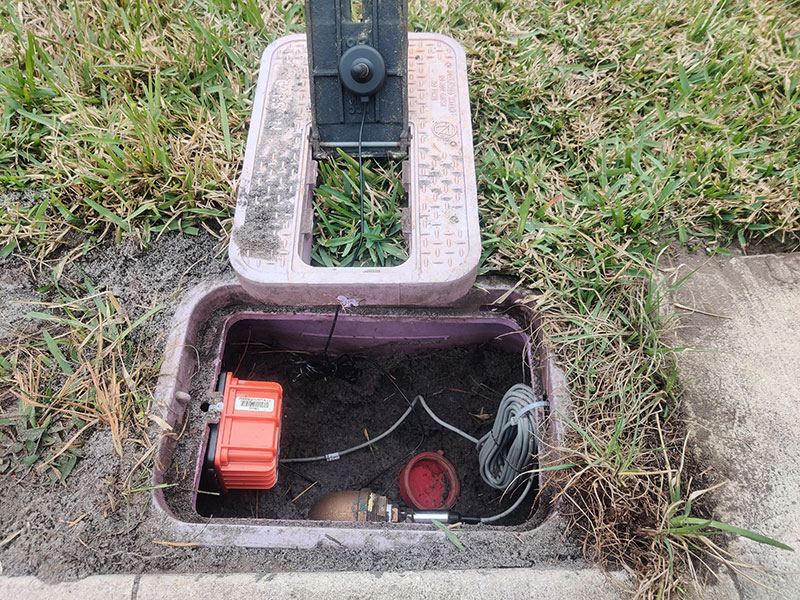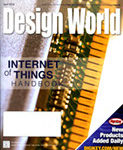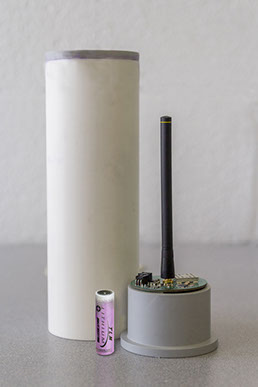Infrastructure
TADIRAN lithium batteries revitalize aging infrastructure
America’s crumbling infrastructure is a growing concern.
According to the American Society of Civil Engineers (ASCE), trillions of dollars are required to repair and maintain roadways, bridges, tunnel, waterworks and energy infrastructure. Repairing and revitalizing our nation’s infrastructure involves many hard-to access locations that demand battery-powered solutions offering decades of maintenance-free performance even in the harshest environmental conditions.
Decision-makers need actionable real-time data to conduct non-destructive evaluations for stress and deterioration, AI-enhanced predictive modeling, and real-time traffic flow data, to name a few.
Industrial grade high energy lithium batteries are ideally designed for remote infrastructure applications. As the lightest non-gaseous metal, lithium offers the highest specific energy (energy per unit weight) and energy density (energy per unit volume) of any chemistry. Lithium batteries are also non-aqueous, enabling certain cells to offer an extended temperature range of –55°C to 125°C.
Tadiran bobbin-type lithium thionyl chloride (LiSOCl2) batteries deliver up to 40-year operating life due to high energy density and extremely low self-discharge (just 0.7% per year) caused by harnessing the passivation effect. By contrast, inferior quality bobbin-type LiSOCl2 batteries are less effective for remote infrastructure applications because their self-discharge rate is up to 3% per year, making 40-year battery life impossible. Here are some common examples:
High pulse application – AMR/AMI metering
Water utilities commonly deploy AMR/AMI meter reading devices to identify leaks, track customer usage and billing, and allow for remote shut-off and reactivation. These devices operate mainly in a standby mode, waking up periodically to transmit and receive data.
When high pulses are required, PulsesPlus™ batteries combine a standard bobbin-type LiSOCl2 battery with a patented Hybrid Layer Capacitor (HLC). The battery and HLC work in parallel, with the battery supplying low background current while the HLC supplies high pulses up to 15 A to initiate data queries and wireless communications, with the HLC eliminating the voltage drop that normally occurs when a pulsed load is initially drawn. The HLC also offers a unique end-of-life voltage curve plateau that can be interpreted to deliver low battery status alerts.
Low rate application – structural stress sensor
Resensys SenSpot structural integrity sensors measure stress, strain, tilt, inclination, vibration, displacement, deformation, temperature, and humidity in various applications, including bridges, tunnels, large commercial buildings, towers, and pipelines. This device draws only microamps of energy while sampling data once a minute, and uses a proprietary low power communications protocol to minimize energy consumption.
Resensys chose Tadiran TL-5902 ½ AA batteries that feature an annual self-discharge rate of less than 1% per year, providing a minimum guaranteed service life of 10 years, with the device rated to work much longer. SenSpot sensor detect erosion within the concrete aggregate surrounding bridge abutments, with TLM Series batteries being chosen for their extended service life and their ability to deliver bursts of high rate energy.
High rate application
On behalf of PennDOT, electrical engineers from the University of Pittsburgh developed a sensor that detects erosion within the concrete aggregate that surrounds bridge abutments, or “bridge scour.”
Over time, waterflow erodes aggregate, especially during high water events. PennDOT employed multiple wireless sensors housed in watertight ¾” PVC tubes that were strategically placed into vertically oriented holes bored into the aggregate. Each sensor was individually encoded to denote the criticality of the location.
To provide PennDOT with an early warning system in case of a potential structural failure, each device remains in standby mode with the battery activating only when the sensor is dislodged and turns horizontally, enabling the device to transmit emergency RFID signals to a nearby transceiver. TLM-1550HP battery enables these potentially life-saving devices to remain inactive for extended years but then reliably power up to deliver short bursts of high rate energy.,
FEATURED APPLICATION
Electrical engineers from the University of Pittsburgh developed a wireless sensor encased in watertight PVC for PennDOT to detect concrete erosion in bridge abutments caused by floodwater, or “bridge scour.” These tubes sit vertically in holes bored into the aggregate and are individually encoded to denote the criticality of the location. The battery remains disconnected, but activates when turned horizontally to provides an early warning if structural integrity is engdangered. TadiranTLM Series high energy batteries remain on standby to transmit emergy RFID signals to nearby transceivers.
Related Applications

Resensys SenSpot structural integrity sensors measure stress, strain, tilt, inclination, vibration, displacement, deformation, temperature, and humidity in bridges, tunnels, large commercial buildings, towers, pipelines, and more. This low-power device draws microamps of energy to continuously sample data. Tadiran TL-5902 ½ AA batteries feature an annual self-discharge rate of less than 1% per year, delivering a long-term solution for hard-to-reach locations.

Ayyeka is utilizing AI-enabled smart sensors to revitalize hard infrastructure, including solid waste and wastewater management, public utilities, transportation, energy exploration and distribution, smart cities, environmental monitoring, and more. Powered by Tadiran bobbin-type LiSOCl2 batteries, these remote wireless devices permit two-way communications to maximize operational efficiency, detect unusual events, enable predictive maintenance and repairs, and help counter growing cyber security threats.
Applications and most commonly chosen battery:
| Application | XOL & iXtra LiSOCl2 | PulsesPlus Hybrid LiSOCl2 | TLI Series Rechargeable Li-ion | TLM Series Lithium Metal Oxide |
|---|---|---|---|---|
| Utility meters & infrastructure |
|
|
|
|
| Structural integrity/vibration sensors |
|
|
|
|
| Environmental temp. sensors |
|
|
|
|
| SCADA |
|
|
|
|
| Electronic Toll Tags (RFID) |
|
|||
| Remote wireless sensors |
|
|
|
|
| Tank level & flow monitoring |
|
|
|
Related Articles

Batteries for the Industrial Internet of Things (IIoT)
(as appeared in Design World)
Let us know more about your application.
From research and design, to world class ISO 9001:2000 certified manufacturing and quality assurance, to a global sales and distribution network, Tadiran is ready to serve your needs with standard cells or custom battery packs.
